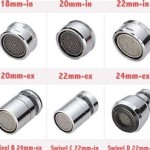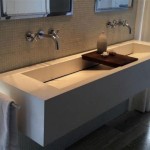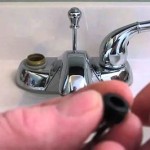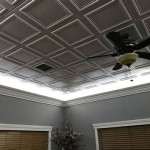Should Laminate Flooring Be Used In Bathrooms?
The question of whether laminate flooring is suitable for bathroom use is a complex one, often debated among homeowners, contractors, and flooring specialists. Laminate flooring offers an attractive, cost-effective alternative to traditional bathroom flooring materials like tile or stone. However, the bathroom environment presents unique challenges, primarily concerning moisture levels, that can significantly impact the long-term performance and durability of laminate.
Understanding the composition of laminate flooring and the specific conditions within a typical bathroom is crucial in determining its suitability for this application. Laminate flooring consists of multiple layers: a wear layer on top, a decorative layer that provides the aesthetic appeal, a core board, and a backing layer. The core board is typically made of high-density fiberboard (HDF) or medium-density fiberboard (MDF), which are wood-based materials susceptible to water damage.
Bathrooms, by their nature, are subject to frequent moisture exposure from showers, baths, sinks, and potential leaks. Water can seep into the seams and edges of laminate planks, causing the core board to swell, warp, and eventually delaminate. This can lead to unsightly bubbling, cracking, and ultimately, the need for complete floor replacement. Therefore, careful consideration and preventative measures are essential when considering laminate flooring for bathrooms.
Water Resistance vs. Waterproofing
It is essential to distinguish between water-resistant and waterproof flooring options. While some laminate flooring products are marketed as water-resistant, this does not imply complete protection against water damage. Water-resistant laminate is typically treated with a sealant that repels water for a limited time. This allows for quick cleanup of spills and splashes, but it does not prevent water from penetrating the seams and damaging the core board if left exposed for an extended period or if there is standing water. Waterproof flooring, on the other hand, is designed to be completely impervious to water. This is typically achieved through a non-wood-based core, such as vinyl or stone polymer composite (SPC).
For bathroom applications, waterproof flooring options are generally considered a safer and more reliable choice. However, advancements in laminate technology have led to the development of enhanced water-resistant laminates with improved sealing and tighter locking systems. These options can be suitable for bathrooms with proper installation, diligent maintenance, and a commitment to preventing standing water.
The level of water resistance required depends on several factors, including the frequency of bathroom use, the ventilation within the room, and the likelihood of spills and leaks. A master bathroom used multiple times a day by a large family will require a higher level of water resistance than a rarely used guest bathroom. Similarly, a bathroom with poor ventilation will experience higher humidity levels, increasing the risk of moisture damage to laminate flooring.
When selecting laminate flooring for a bathroom, it is crucial to carefully review the manufacturer's specifications and warranty information. Look for products specifically designed and tested for wet environments. Pay close attention to the water resistance rating and the recommended installation procedures. It is also advisable to consult with a flooring professional who can assess the specific conditions of the bathroom and recommend the most appropriate flooring solution.
Installation and Sealing Considerations
Proper installation is paramount to the success of laminate flooring in a bathroom environment. Even the most water-resistant laminate will fail if it is not installed correctly. The installation process should include a thorough inspection of the subfloor to ensure it is level, clean, and dry. Any imperfections in the subfloor should be addressed before installing the laminate to prevent unevenness and potential water damage.
A moisture barrier should be installed beneath the laminate flooring to protect it from moisture rising from the subfloor. This is particularly important in bathrooms located on ground level or below grade, where moisture levels are typically higher. The moisture barrier should be properly sealed at the seams and edges to prevent water from penetrating.
Gaps around the perimeter of the room and around pipes and fixtures should be carefully sealed with a waterproof sealant. This will prevent water from seeping under the flooring and causing damage. Special attention should be paid to areas around the toilet, shower, and tub, where water exposure is more likely. The sealant should be applied according to the manufacturer's instructions to ensure a watertight seal.
The locking system of the laminate planks is another critical factor in preventing water damage. Tighter locking systems provide a more secure and water-resistant seal between the planks. Look for products with click-lock systems that are specifically designed for wet environments. These systems typically feature a tighter interlock and a waterproof coating on the edges of the planks.
In addition to proper installation, ongoing maintenance is essential to prolong the life of laminate flooring in a bathroom. Regular cleaning with a damp mop and mild detergent will help to remove spills and prevent water from pooling on the surface. Avoid using excessive amounts of water when cleaning, as this can seep into the seams and damage the core board.
Alternative Flooring Options for Bathrooms
While advancements in laminate technology have made it a more viable option for bathrooms, several alternative flooring materials are generally considered more suitable for this environment. These options offer superior water resistance and durability, providing long-lasting performance with minimal maintenance.
Tile is a classic and popular choice for bathrooms due to its inherent water resistance and wide range of styles and designs. Ceramic, porcelain, and stone tiles are all excellent options for bathrooms, providing a durable and waterproof surface that can withstand frequent moisture exposure. Tile is also easy to clean and maintain, making it a practical choice for busy households.
Vinyl flooring is another excellent option for bathrooms due to its waterproof properties and affordability. Sheet vinyl is particularly well-suited for bathrooms, as it is available in large rolls that can be installed with minimal seams, reducing the risk of water penetration. Luxury vinyl plank (LVP) and luxury vinyl tile (LVT) are also popular choices, offering a realistic wood or stone look with the added benefit of being waterproof.
Stone polymer composite (SPC) flooring, also known as rigid core vinyl, is a relatively new option that is gaining popularity for bathroom applications. SPC flooring features a waterproof core made of stone dust and plastic, providing exceptional durability and water resistance. It is also easy to install and maintain, making it a convenient choice for homeowners.
Each of these alternative flooring options offers unique advantages and disadvantages in terms of cost, aesthetics, and installation requirements. It is essential to carefully consider the specific needs and preferences of the homeowner when selecting the most appropriate flooring material for a bathroom.
Ultimately, the decision of whether to use laminate flooring in a bathroom depends on a variety of factors, including the type of laminate, the installation process, the maintenance routine, and the overall risk tolerance of the homeowner. While enhanced water-resistant laminates can be suitable for bathrooms with proper precautions, alternative flooring options like tile, vinyl, and SPC flooring are generally considered more reliable and durable choices for this moisture-prone environment.

Does Laminate Make The Best Bathroom Flooring Carpet Guys

Laminate Bathroom Floors

Waterproof Laminate Flooring Review Pros And Cons

How To Install Waterproof Laminate Flooring Twenty Oak

Choosing Laminate Flooring For Your Bathroom Tarkett Asia

The Best Waterproof Flooring Options Inc Trends Bathroom

Best Bathroom Flooring

Best Bathroom Flooring

Choosing Bathroom Floors Flooring Blog

Laminate Flooring Ideas For A Bathroom Lv Hardwood Toronto
Related Posts






